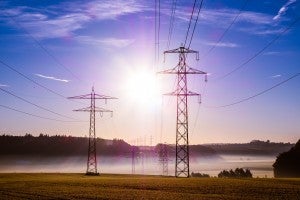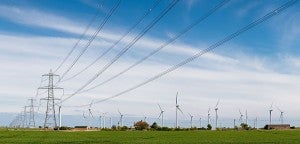By Susan Tierney, Managing Principal, Analysis Group, Inc.
This post originally appeared on World Resources Institute’s Insights blog.
Did you notice the massive blackout on April 16th, 2015?
Actually, I didn’t either. That’s because the electric system didn’t falter. The fact that April 16th came and went without a reliability glitch was both nothing unusual and also a really big deal. Because history has a habit of repeating itself, it’s worth understanding why April 16th was a remarkable (and remarkably dull) milestone in electric-industry history.
The Origins of the Mercury and Air Toxics Standard (MATS)
Back in 2010, just under a third of all U.S. power-plant capacity burned coal to produce electricity. Many of those plants were emitting unhealthy levels of toxic air pollution, which forthcoming regulations from the Environmental Protection Agency (EPA) would limit. Critics of EPA’s rule doubted that manufacturers and installers could get enough pollution-control equipment into the market and on to power plants fast enough to meet the deadline under the new Mercury and Air Toxics Standard (MATS) – and that taking so much of the nation’s generating capacity off line all at once would inevitably lead to an unreliable electric system.
Before the EPA finalized its MATS rule at the end of 2011, countless groups published estimates of how many coal plants would retire due to the EPA regulations. The North American Electric Reliability Corporation (NERC) warned that “with [the mercury rules] as the primary driver, the industry faces considerable operational challenges to complete, coordinate and schedule the necessary environmental retrofits.” Others, including opponents of the rule, argued that, in the name of reliability, the rule would need to be delayed.
In December 2011, EPA issued the final MATS rule, which gave owners of affected power plants until April 16, 2015, to either bring their plants into compliance with the new requirements or cease their operations.
That date passed two weeks ago without incident. The lights didn’t dim.
Why not? First, the EPA stood by its commitment (made in November 2011 by then-Assistant EPA Administrator Gina McCarthy in testimony to the Federal Energy Regulatory Commission, the agency with responsibility for electric system reliability) that “In the 40-year history of the Clean Air Act, EPA rules have never caused the lights to go out, and the lights will not go out in the future as a result of EPA rules.”
Part of the reason for that is that the EPA is nowhere near as rigid or anti-business as many observers like to portray it. The final EPA rule gave power-plant owners the ability to request an additional year of time to comply, and allowed yet another year in unusual cases where continued operation of a plant would be needed for reliability. According to the National Association of Clean Air Agencies, as of March 2015, owners of 38 percent of the 460 coal-fired power plants affected by the MATS rule had requested additional time to comply and, of those, the EPA granted an extension to 95 percent.

- Kentucky power plant. Photo by Cindy Cornett Seigle/Flickr
Second, the electric industry is already transitioning to rely less on coal, even without the MATS rule. Between 2011 and the end of 2014, 21.5 gigawatts (GW) of coal-fired power plants retired. The fact that these retirements occurred before the MATS deadline indicates that something other than EPA’s regulations is driving the least-efficient and oldest coal plants into retirement.
Coal’s ardent supporters may prefer to point the finger at EPA, but the truth is that market conditions are responsible: relatively flat electricity demand, increased supply from power plants using other domestic energy sources (natural gas, wind and solar), and price competition between natural gas and coal. Another 14.6 GW of power plants have retired or will retire in 2015. This total amount of coal-plant retirements (36.1 GW) falls at the mid-point of estimates made during the 2010-2011 period.
Third, the electric industry is dynamic. The market has responded to signals that additional electric resources are needed to replace old ones. Many projects have come forward: new power plants, upgraded transmission facilities, rooftop solar panels, energy-efficiency measures and energy-management systems. These varied responses are the norm, collectively maintaining reliability and modernizing the power system along the way.
That’s why there were no blackouts on April 16th, despite all the dire warnings.
History Repeats Itself
The reliability theme is re-emerging once again, as the states and the electric industry face the prospect of EPA finalizing its “Clean Power Plan” to control carbon pollution from the nation’s power plants. In anticipation of the final rules coming out this summer and of power plant owners having to comply with them by 2020, many observers are saying that the electric system’s reliability will be jeopardized if the EPA goes forward as planned. The latest warning came last month with a new assessment published by NERC, calling for more time to allow the industry and the states to respond to the forthcoming carbon-pollution rules.
Such warnings are common whenever there is major change in the industry, and they’re not without value: They play an important role in focusing the attention of the industry on taking the steps necessary to ensure reliable electric service.
But warnings lose their value when they are read as more than what they are. Notably, the reliability concerns currently being raised by some observers about EPA’s Clean Power Plan presume inflexible implementation, are based on worst-case scenarios, and assume that policy makers, regulators and market participants will stand on the sidelines until it is too late to act.
There is no historical basis for these assumptions. Reliability issues will be worked out by the dynamic interplay of actions by regulators, entities responsible for reliability, and market participants, all proceeding in parallel to find solutions.
EPA’s proposed carbon-pollution rule provides states and power plant owners with the means to prevent reliability problems by giving them a wide range of compliance options and plenty of operational discretion (including various market-based approaches, other means to allow emissions trading among power plants, and flexibility on deadlines to meet interim targets). And EPA Administrator McCarthy has stated repeatedly that her agency will write a final rule that reflects the importance of a reliable grid and provides the appropriate flexibility.
One of the best ways to assure electric reliability will be for states to actively avail themselves of the Clean Power Plan’s flexibility, rather than “just say no.” States that do not take advantage of this flexibility and then suggest that EPA’s regulations led to unreliable and uneconomic outcomes may be courting a self-fulfilling prophecy. The more states sit in the driver seat and figure out how to arrive at the emissions-reduction destination in a manner consistent with their goals and preferences, the more likely it is that they’ll accomplish them.













